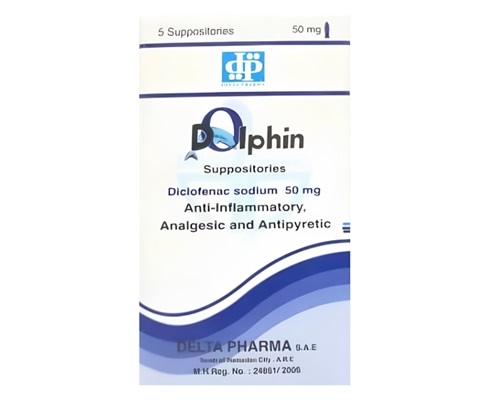Description
Trade name:
Recoxibright
Compound:
Each tablet contains:
Etoricoxib 120 mg
Auxiliary components:
Microcrystalline cellulose, calcium phosphate dibasic anhydrous, sodium croscarmellose, hydroxypropyl cellulose, sodium lauryl sulfate, colloidal silicon dioxide, magnesium stearate.
Properties:
Etoricoxib is a selective inhibitor of cyclooxygenase-2 (COX-2) when administered orally at therapeutic concentrations. In clinical pharmacology studies, etoricoxib dose-dependently inhibited COX-2 without affecting COX-1 at daily doses up to 150 mg. Etoricoxib does not inhibit prostaglandin synthesis in the gastric mucosa and does not affect platelet function.
Cyclooxygenase is responsible for the formation of prostaglandins. Two isoforms of cyclooxygenase have been identified: COX-1 and COX-2. COX-2 is an isoenzyme that is induced by various proinflammatory mediators and is considered the main enzyme responsible for the synthesis of prostanoid mediators of pain, inflammation, and fever.
Indications:
Treatment of chronic lower back pain;
Symptomatic therapy of osteoarthritis, rheumatoid arthritis, ankylosing spondylitis, pain and inflammation associated with acute gouty arthritis;
Short-term therapy of moderate to severe acute pain after dental surgery.
Method of administration and dosage:
The drug is taken orally, 1 tablet of 120 mg once a day, regardless of food intake, with a small amount of water.
Recoxibrite should be used in the minimum effective dose for the shortest possible course.
The duration of use of the drug at a dose of 120 mg is no more than 8 days.
Contraindications:
Hypersensitivity to any component of the drug;
Peptic ulcer of the stomach and duodenum in the acute phase; active gastrointestinal bleeding;
Complete or incomplete combination of bronchial asthma, acute rhinitis, recurrent polyposis of the nose and paranasal sinuses and intolerance to acetylsalicylic acid or intolerance to other NSAIDs (including history);
Severe liver dysfunction (serum albumin <25 g/l or ≥10 points on the Child-Pugh scale);
severe renal failure (CC less than 30 ml/min);
Progressive kidney disease;
Inflammatory bowel disease;
chronic heart failure (II-IV functional class according to NYHA);
Uncontrolled arterial hypertension, in which blood pressure readings persistently exceed 140/90 mm Hg;
Confirmed coronary heart disease;
Peripheral arterial disease and/or cerebrovascular disease;
Confirmed hyperkalemia;
Pregnancy;
Breastfeeding period;
Children under 16 years of age;
Lactase deficiency, lactose intolerance, glucose-galactose malabsorption.
Caution should be exercised when using the drug in the following groups of patients:
Patients at increased risk of developing gastrointestinal complications due to NSAID use; elderly patients taking other NSAIDs concomitantly, including acetylsalicylic acid, or patients with a history of gastrointestinal diseases such as peptic ulcer disease and gastrointestinal bleeding;
Patients with a history of risk factors for cardiovascular complications such as dyslipidemia/hyperlipidemia, diabetes mellitus, arterial hypertension, smoking);
Patients with a history of heart failure, left ventricular dysfunction or hypertension, and patients with pre-existing edema and fluid retention;
Patients with mild liver dysfunction (5-6 points on the Child-Pugh scale) should not exceed a dose of 60 mg once a day; patients with moderate liver dysfunction (7-9 points on the Child-Pugh scale) – 30 mg once a day;
Patients with dehydration;
Patients with impaired renal function, concomitantly using ACE inhibitors, diuretics, angiotensin II antagonists, especially the elderly;
Patients with CC <60 ml/min;
patients with pre-existing significant renal impairment, impaired renal function, decompensated heart failure or liver cirrhosis who are at risk from long-term NSAID use.
Precautions:
Caution should be exercised when co-administering the following drugs:
anticoagulants (eg, warfarin);
antiplatelet agents (for example, acetylsalicylic acid, clopidogrel);
drugs metabolized by sulfotransferases.
Impact on the ability to drive vehicles and operate machinery:
Patients who experience spatial disorientation, dizziness, or drowsiness while taking etoricoxib should refrain from driving or operating machinery.
Side effects:
Infectious and parasitic diseases: alveolar ostitis, gastroenteritis, upper respiratory tract infections, urinary tract infections.
From the blood and lymphatic system:
anemia (mainly as a result of gastrointestinal bleeding), leukopenia, thrombocytopenia.
From the immune system:
hypersensitivity reactions,
angioedema/anaphylactic/anaphylactoid reactions including shock.
From the side of metabolism and nutrition:
edema/fluid retention,
decreased or increased appetite, weight gain.
From the nervous system:
dizziness, headache, taste disturbance, insomnia, paresthesia/hypesthesia, drowsiness.
From the side of the organ of vision:
blurred vision, conjunctivitis.
From the side of the organ of hearing and labyrinthine disorders: tinnitus, vertigo.
From the heart side:
sensation of heartbeat, arrhythmia,
atrial fibrillation, tachycardia, chronic heart failure, nonspecific changes on ECG, angina pectoris.
From the vascular side:
hypertension, hot flashes, cerebrovascular accident, transient ischemic attack, hypertensive crisis.
From the respiratory system:
bronchospasm, cough, shortness of breath, nosebleed.
From the gastrointestinal tract:
abdominal pain, constipation, flatulence, gastritis, heartburn/gastroesophageal reflux, diarrhea, dyspepsia/epigastric discomfort, nausea, vomiting, esophagitis, oral mucosal ulcers,
bloating, changes in intestinal motility, dry mouth, gastroduodenal ulcer, gastric ulcer including gastrointestinal perforation and bleeding, irritable bowel syndrome, pancreatitis.
From the liver and biliary tract: increased activity of ALT, AST
liver failure.
From the skin and subcutaneous tissues:
ecchymosis, facial swelling, itching, rash, erythema, urticaria, Stevens-Johnson syndrome.
From the musculoskeletal system:
muscle spasms/cramps, musculoskeletal pain/stiffness.
From the urinary system:
proteinuria, increased serum creatinine, decompensated renal failure/renal insufficiency.
General disorders and administration site conditions: asthenia/weakness, influenza-like syndrome, chest pain.
Impact on the results of laboratory and instrumental studies:
increased blood urea nitrogen, increased CPK, hyperkalemia.
Storage method:
Store in a dry place at a temperature not exceeding 30 degrees.









